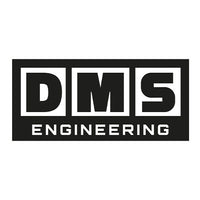Disclaimer
The information provided in these instructions is on an "as is" basis without warranties of any kind, express or implied. The author disclaims all liability for any actions taken or not taken based on this information. Users are responsible for their own actions and decisions based on these instructions. This disclaimer includes, but is not limited to, any direct, indirect, incidental, or consequential damages. By using these instructions, you acknowledge and agree to this disclaimer. If you do not agree, do not use the provided information.
Introduction
Swapping your car's engine can be an exciting and rewarding project, whether you're looking to increase horsepower, improve performance, or simply replace a worn-out engine. While it requires careful planning, mechanical know-how, and time investment, swapping an engine allows you to customise your car to your specific preferences and achieve the performance goals you desire. In this comprehensive guide, we'll walk you through the step-by-step process of swapping your car's engine, from preparation to completion, so you can embark on this exhilarating journey with confidence and success.
1. Research and Planning
Before you begin, thoroughly research and plan your engine swap to ensure a smooth and successful process:
- Select the Right Engine: Choose an engine that fits your car's make, model, and year, as well as your performance goals and budget. Consider factors such as horsepower, torque, compatibility, and ease of installation.
- Gather Necessary Parts and Tools: Identify all the components and tools you'll need for the swap, including the new engine, engine mounts, wiring harness, ECU (Engine Control Unit), transmission, cooling system components, exhaust system, and any other necessary parts.
- Understand Legal and Regulatory Requirements: Familiarize yourself with local laws and regulations regarding engine swaps, emissions compliance, and vehicle registration. Ensure that your engine swap complies with applicable regulations and obtain any necessary permits or approvals.
2. Prepare Your Workspace
Create a clean and organized workspace equipped with the necessary tools and equipment for the engine swap:
- Secure a Suitable Workspace: Choose a well-lit, ventilated area with ample space to work safely and comfortably. A garage or workshop with a concrete floor is ideal for engine swaps.
- Gather Tools and Equipment: Ensure you have access to a comprehensive set of tools, including wrenches, sockets, screwdrivers, engine hoist or crane, jack stands, and specialty tools for engine removal and installation.
- Protective Gear: Wear appropriate safety gear, including gloves, safety glasses, and ear protection, to protect yourself from potential hazards during the engine swap.
3. Remove the Old Engine
Before installing the new engine, you'll need to remove the old engine from your car:
- Disconnect Battery: Disconnect the car's battery to prevent electrical shorts and accidents during the engine removal process.
- Drain Fluids: Drain the engine oil, coolant, and other fluids from the old engine and transmission.
- Disconnect Components: Disconnect all necessary components attached to the engine, including the wiring harness, fuel lines, exhaust system, drivetrain components, and engine mounts.
- Support the Engine: Use an engine hoist or crane to support the engine's weight, then unbolt the engine mounts and carefully lift the engine out of the car.
4. Prepare the New Engine
Before installing the new engine, prepare it for installation by performing necessary modifications and inspections:
- Inspect and Clean: Thoroughly inspect the new engine for any damage or defects, and clean it to remove dirt, grease, and debris.
- Swap Components: Transfer any necessary components from the old engine to the new engine, such as the intake manifold, exhaust manifolds, sensors, and accessories.
- Test Fit: Test fit the new engine in the car to ensure proper alignment and clearance with surrounding components. Make any necessary adjustments or modifications as needed.
5. Install the New Engine
Once the new engine is prepared, it's time to install it in your car:
- Align and Lower: Carefully align the new engine with the engine bay, ensuring that all mounting points and connections line up properly. Lower the engine into place using the engine hoist or crane.
- Attach Components: Reconnect all components and systems to the new engine, including the wiring harness, fuel lines, exhaust system, cooling system components, and drivetrain components.
- Secure Engine Mounts: Bolt the new engine to the engine mounts and transmission mounts, ensuring that all fasteners are tightened to the manufacturer's specifications.
- Double-Check Connections: Double-check all connections and components to ensure that everything is properly installed and secure.
6. Test and Tune
After installing the new engine, perform a series of tests and adjustments to ensure proper operation and performance:
- Check Fluid Levels: Fill the engine with fresh oil, coolant, and other necessary fluids, and verify that all fluid levels are correct.
- Start the Engine: Start the engine and check for any abnormal noises, leaks, or warning lights. Monitor engine parameters such as oil pressure, coolant temperature, and fuel pressure to ensure proper operation.
- Perform Tuning: If necessary, perform tuning and adjustments to optimize engine performance and drivability. This may include adjusting fuel and ignition timing, idle speed, and air/fuel mixture.
- Test Drive: Take the car for a test drive to evaluate engine performance, drivability, and overall functionality. Pay attention to throttle response, acceleration, braking, and handling characteristics.
7. Final Checks and Inspection
Once you've completed the engine swap and performed necessary tests and adjustments, perform final checks and inspections to ensure everything is in proper working order:
- Inspect for Leaks: Check for any fluid leaks, including oil, coolant, and fuel leaks, and address any issues promptly.
- Verify Connections: Double-check all connections, hoses, and wiring to ensure that everything is properly connected and secured.
- Verify Emissions Compliance: Ensure that the engine swap complies with emissions regulations and that all emissions control systems are functioning correctly.
- Road Test: Take the car for another test drive to confirm that all systems are functioning as intended and that the engine swap was successful.
Conclusion
Swapping your car's engine is a challenging yet rewarding project that allows you to customize your car's performance and unlock its full potential. By following this comprehensive guide and utilizing proper techniques and tools, you can successfully complete an engine swap and enjoy the thrill of driving a car that meets your unique specifications and performance goals. Whether you're seeking increased horsepower, improved fuel efficiency, or enhanced reliability, a carefully executed engine swap can transform your car into the ultimate driving machine.



